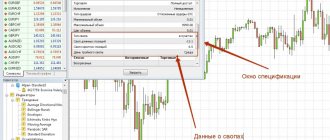It is believed that investing in bonds is a virtually risk-free investment. The debt market itself belongs to the class of conservative investment. And investors are willing to buy bonds due to their higher yields compared to bank deposits.
There is logic in this. For example, if you compare interest rates on deposits and the yield on bonds of the same bank, the “profitability” of the latter will be higher. The interest rate on bond coupons is always at a higher level.
But there is a class of assets that carry increased risks for investors. We are talking about subordinated bonds.
What are subordinated bonds in simple words
Subordinated bonds are securities that provide increased income, but are issued by banks in Russian rubles (rubles), dollars (dollars) or euros.
Issues related to them are regulated by Art. 25.1 Federal Law of the Russian Federation No. 395-1 dated December 2, 1990 (as amended on December 27, 2019).
Take our proprietary course on choosing stocks on the stock market → training course
The rights of the bondholder relate to the receipt of income, conversion and, accordingly, redemption. Subordinated securities are characterized by the following:
- the nominal value of 1 bond is not less than 10 million rubles;
- perpetual or at least 5-year repayment period;
- early repayment is impossible at the request of the bond holder (PUT offer), but is allowed at the initiative of the bank (CALL offer);
- mostly non-convertible (if necessary, they are written off permanently).
In practice, you can find other options for the names of these securities: “subords”, “subordinated” or “junior” (English subordinated) and “minor”.
Important!
In the event of a bank bankruptcy, the claims of the subordination holder are satisfied next to last. First, the main claims are repaid, including for ordinary, exchange-traded bonds, then for subordination, and then for shares.
How to distinguish subordinated shares from ordinary shares
Not a single bond issue contains direct indications that it is subordinated. You can recognize that these are subords by their characteristic features. These include:
- The fact that it is a Eurobond.
- It was issued by the bank.
- It has an appropriate repayment period: unlimited or at least 5 years.
The last two conditions apply not only to Eurobonds, but also to securities issued for the domestic market.
The assumption that these are indeed subordination can be confirmed by the description of the characteristics of the issue in the bond prospectus.
It is published on the bank’s website and e-disclosure.ru (information disclosure server).
Another, by the way, the most optimal way is to use the investfunds.ru service. By searching for bonds here you can find your issue by filling out the provided search form. Next, in the search results you can see the parameters of the bond, where it will be indicated whether it is subordinated or not.
Comparison of subordinated and ordinary bonds
| Main evaluation criteria (for comparison) | Regular bonds | Subordinated |
| Release form | emission | emission |
| Type of issuer | any | bank |
| Term | no restrictions | at least 5 years |
| Profitability | high | increased (1-3% more than normal) |
| Early repayment | specified for each release | impossible without agreement with the bank |
| Repayment in bankruptcy | priority right | after regular bonds |
| Risk | high, but for government bonds. banks have protection | elevated (higher risk) In bankruptcy, assets are canceled |
| Business valuation | Financial analysis according to IFRS | Financial analysis according to RAS |
| Calculation of NPV, IRR in Excel | Valuation of stocks and bonds |
Why do banks need subordinated bonds?
The main factor that encourages banks to more actively use subordinated Eurobonds is regulatory changes in the banking system, which are associated with additional capital requirements (we wrote about this in detail here). According to Dmitry Gladkov, many banks are simply trying to be proactive; they understand how the regulatory field will change in the coming years, and are already thinking about how to best adapt to new capital standards.
What is bank capital and what is it like?
Bank capital is the main resources of the bank, which form the basis of its activities and are used to conduct banking operations. Bank capital, on the one hand, is needed to absorb possible losses and ensure the protection of the interests of depositors. On the other hand, it performs an operational function, that is, it creates a growth base for the bank’s assets.
According to Basel, the bank's entire capital is divided into first-tier capital (Tier 1 Capital) and second-tier capital (Tier 2 Capital).
Tier 1 capital, or core capital, is the main measure of a bank’s financial stability. With this capital the bank is protected from possible unexpected losses. Tier 1 capital includes paid-up authorized capital (minus bank shares purchased from shareholders), reserve and other funds of the bank, retained earnings of previous years and the reporting year.
Tier 2 capital includes hidden reserves, revaluation reserves, general reserves and loss reserves, as well as hybrid instruments such as subordinated debt obligations.
— All three banks that placed subordinated Eurobonds are actively growing in the segment of unsecured consumer lending. In connection with the tightening of regulation from October 1 (in particular, the introduction of the maximum debt load per borrower indicator into the calculation of risk weights), replenishing capital to continue growth in retail while the debt load of clients continues to grow is logical, says Mikhail Shlemov , senior analyst. VTB Capital.
Source: Central Bank.
Data as of Oct. 1. 2022 “Our task was to strengthen the bank’s capital position in the context of tightening regulation by the Central Bank in the retail lending segment,” confirmed a representative of Home Credit. — It was important for us to create an additional capital buffer and support business development.
According to Yulia Kolesova, subordinated bonds are the so-called hybrid capital, which the bank needs to diversify the sources of its capital base. The bank's main source of capital is shareholders' money and profits that can be capitalized. And raising capital on the market is an additional resource.
“Issuing subordinated bonds for a bank is a way to optimize the capital structure,” agrees Dmitry Gladkov. — Naturally, these problems could be solved with the help of share capital. But in terms of return on capital and other metrics, this is not entirely effective. Therefore, banks often use subordinated bonds.
Banks that demonstrate good asset growth dynamics are most interested in this instrument, Kolesova clarifies. This growth must be supported by an adequate capital base. Therefore, the bank tries to use all possible means of raising capital.
“Alfa-Bank has ambitious growth plans, and we have raised capital to support these plans with a reserve for the future,” Kolesova explained. “In addition, our goal was to attract capital, which costs us less than shareholders’ funds. We are a private bank. And our shareholders set a very high bar for return on capital. In dollars, we must provide 15% or more in terms of ROE. Therefore, even perpetual subordination, not to mention fixed-term ones, are a cheaper source of capital for us than shareholders’ funds.
“Our current capital indicators are at comfortable levels, we meet all standards with a reserve,” assured the chairman of the board of Sovcombank. — Subordinated bonds for us are a form of raising capital necessary for asset growth. And there are a lot of ideas for effective investment of capital in Russia today.
For what purpose are subordinated bonds issued?
For a bank, subordination is a source of second-tier capital, the so-called auxiliary capital.
In the future it can be used:
- To issue loans, as well as to attract loans.
- To bring capital into full compliance with the standards established by the Central Bank.
The main goal is to attract additional funds. This is much easier to do with the help of subboards. They tempt with their high profitability. In addition, they are issued faster, since there are fewer requirements for the bank for them. And the issue registration procedure has been simplified.
Who is interested in issuing subordinated bonds
First of all, the issuing bank. He is responsible for these securities only with his current financial condition. If the condition worsens, the bank has the right, on a completely legal basis, to stop making payments on them, and in the event of bankruptcy, to write them off completely. Such write-offs are shown as a positive result in the income statement and increase Tier 1 capital.
In simple words. Subbords replenish second-tier bank capital and are also subject to write-off to first-tier capital if it is insufficient. Then payments of par and interest are stopped, but only to the extent required to achieve the required level of capital ratio. In this case, interest that is not paid is not compensated and is not subject to accumulation.
As for the holders of subordination, under specified circumstances they have the right to convert them into shares. This opportunity is provided in exchange for writing off raised funds to the issuer's retained earnings.
In addition to banks, business owners have an interest in issuing subordination. They resort to it because of poor market conditions or “problem” debt. This avoids additional issue of shares and helps increase liquidity.
Another interested party is the mother. The subsidiary company places subordinates, which, if there is no interest in them, are purchased by the parent company.
How it works in Russia
In the Russian Federation, subbords are issued by both large and small issuers. These are mainly bank Eurobonds. You can purchase at least 1 bond with only $1,000.
Important!
The Bank of Russia, in Information Letter No. IN-016-41/26 dated May 11, 2018, prescribes not to raise funds through subordination for all individuals (non-professional investors) without exception.
Due to the increased risk inherent in these securities, it is recommended to work in this direction primarily with professionally trained investors.
We are talking about those investors who are or are recognized as qualified under the current legislation of the Russian Federation.
Who produces Eurosubboards now?
Before the introduction of sanctions, Eurosubbords were very popular among Russian state banks. At one time, VTB, Sberbank, Gazprombank, and Rosselkhozbank actively issued subordination in the form of Eurobonds. However, today this is the prerogative of exclusively private banking institutions. This fall, three large private banks from Russia - Sovcombank, Alfa-Bank and Home Credit Bank - sold issues of subordinated Eurobonds in dollars abroad. The last time such a number of Eurosubboards from Russia was placed was in 2022.
— I think that this is, first of all, the right combination of supply and demand, as it always happens in the market. Transactions are impossible without issuers who need funds, and without investors who are interested in these instruments, explains the surge of interest in subords Dmitry Gladkov , acting. O. Head of the Investment Banking Department (the investment bank participated as an organizer in the issues of Sovcombank and Home Credit Bank. - Ed.
). — We continue to see a growth trend in the banking system, and in different sectors - both in retail and in corporate business. This is very good. And the macro situation in Russia as a whole also remains positive. The Central Bank shows itself to be an exceptionally competent regulator. Against the backdrop of all these trends, investors’ attitude towards the banking system is generally positive. Moreover, compared to other emerging market economies, the Russian banking sector and Russian issuing banks look stronger and more advantageous. And although bank capital instruments are, in principle, associated with higher risk for investors in all jurisdictions, it is quite natural that we see very good demand for such securities.
— There were few transactions in the first half of the year.
At the same time, a fairly calm situation was developing from the point of view of the sanctions factor. As a result, in September a unique window arose in the market for placements of Russian companies. Banks as issuers also took advantage of this situation,” agrees Yulia Kolesova. Source: Cbonds
According to Dmitry Gusev , Chairman of the Board of Sovcombank, recently the sensitivity of investors to geopolitical risks has indeed decreased noticeably - they have become accustomed to uncertainty. On the other hand, due to lower interest rates in developed economies, international investors are increasingly attracted to securities of high-quality and reliable issuers from developing countries. Both of these factors had a positive impact on the demand for bonds of Russian issuing banks.
Sovcombank was the first to enter the market with its European subboards in early October. The volume of the issue was $300 million. The coupon is fixed - 8% per annum until the call option (April 7, 2025), then the rate will be determined as the yield value of 5-year UST + margin 6.427%. Repayment is scheduled for April 7, 2030. The liability falls into the bank's Tier 2 capital.
Demand for securities significantly exceeded supply. 85% of the issue was purchased by investors from the UK, continental Europe, the USA and Asia, the remaining 15% was bought by Russian investors, Dmitry Gusev :
— In a sense, our deal can be considered a landmark deal for the market: in fact, this is the first debut of subordinated Eurobonds of a Russian private bank since 2013. In addition, among all the issues of Eurosubords of Russian banks, the issue of Sovcombank, along with the issue of Alfa-Bank, has the highest rating from the international rating agency - BB from Fitch.
Unlike Sovcombank, for Alfa-Bank the current issue of subordination for $400 million is not a debut, and it cost much less than its competitor. The coupon rate for 11-year securities was 5.95% per annum until the date of a possible call option on April 15, 2025 (then the rate, as in the Sovcombank issue, will be determined as the yield value of 5-year UST + margin 4.546%). The issue amount will also be included in Alfa-Bank’s sources of additional capital (Tier 2).
“We entered the market in early October, when investor demand for issues of Russian issuers was already sufficiently satisfied, and Alfa-Bank literally managed to jump into the last carriage of the departing train,” recalls Yulia Kolesova. “Nevertheless, we still had quite a decent demand for the deal (the total book was about $500 million).
— Subordinated issues of banks
- this is not the same as issues of Gazprom or Severstal. The investor base for them is much smaller, and oversubscriptions by 3-4 times, which corporations have, are almost never observed here, with the exception of situations when the borrower offers a generous premium to the market, says Kolesova. — When placing banks, it is important that the volume of the book is sufficient to reduce the price. It is no secret that the initially announced rate range in many cases is not the final “fair” placement price, but gives an idea of the issuer’s level of expectations. The main criterion for a successful transaction is a price reduction during bookbuilding to this level. If there was such an opportunity, then everything went well. We managed to break through the psychological level of 6% in pricing - we made it 5.95%. This is the lowest rate in the banking sector in Russia, the CIS and Turkey since February 2014. Since we are a private bank, for us the cost of placement is precisely one of the most important criteria for success.
The Alfa-Bank representative explains the difference in price with its competitor primarily by Sovcombank’s debut fee.
— Sovcombank is, in fact, a new name for the international market. And at the same time, the bank debuted with a complex instrument. If it had some kind of established credit history on foreign capital markets, issues that had already been repaid, market participants would see that the issuer had obligations that were successfully fulfilled, perhaps in this case a subordinated issue could be placed on lower price. But the bank followed the path of a debut issue with a complex instrument and had to offer some kind of premium to the market for this. Plus, it is not the largest bank, not systemically important, it is outside the top 10. In general, I would say that this is a niche placement, which involved investors buying high yield securities, where there is a higher risk, but also a higher return.
According to Dmitry Gladkov, debut issues of second-tier capital (as in the case of Sovcombank) are not a very common occurrence for the market. As a rule, when a bank is about to place a subordination, it already has some kind of senior benchmark. Sovcombank did not have such a guideline. “Yes, this is an unusual step from the issuer’s point of view, but it is completely justified economically,” explains Gladkov.
— The demand of borrowing banks for senior issues is, in principle, quite limited. This is because deposit funding is much cheaper for banks. In this regard, the Eurobond market simply cannot keep up with the rapid fall in deposit rates. At the liability level, banks are successfully funded at record low levels through their depositors. So in this regard, Sovcombank acted completely rationally: borrowing at a higher price through senior bonds just to create a benchmark would not be economically feasible.
— It is important for us to create a history of public borrowings and transactions.
And we actually made our debut on the global debt market with this issue,” Dmitry Gusev commented on the results of the placement. “Our goal was to present the bank to investors as a reliable issuer with an effective and sustainable business model and to attract large international institutional investors to the deal. And this is an excellent result for a debut release. Well, investors should also be happy: the price has increased significantly since the placement. Source: Cbonds
Home Credit Bank is not new to the international capital markets. But for him, this transaction is also partly a debut: these are the bank’s first perpetual (eternal) subordinated Eurobonds, which are accounted for in Tier 1 capital.
“We have been monitoring the debt market for a long time and were preparing for the placement,” said Bulat Zogdoev , director of the financial markets department at Home Credit Bank. — In mid-2022, favorable conditions developed for bank issuers, an “investor window” appeared, and we were ready to take advantage of it.
At the first stage, after holding meetings with investors, we returned to the local debt market with ruble exchange-traded bonds and placed a three-year issue worth RUB 5 billion in September. And in the second half of October, it was decided to announce a deal to place perpetual subordinated Eurobonds.
According to Zogdoev, at some points the size of the book reached $650 million, and as a result of its closure, the volume of demand amounted to about $450 million. Investors from Russia, Switzerland, as well as institutional investors from the UK and even offshore funds from the USA showed great interest in the securities.
During the placement process, the bank updated the yield target twice; as a result, the securities were placed at a rate of 8.8% per annum. True, the final volume of production turned out to be surprisingly modest.
“When preparing the transaction, we considered and discussed with potential investors the range of the amount from $200 to $300 million, and ultimately decided that a comfortable issue volume for us in the current conditions is $200 million. Thus, we remained within the initially considered volume,” explained representative of Home Credit. — It is important to remember that in addition to the fact that perpetual subordinated bonds are taken into account in Tier 1 capital, such an instrument is also relatively expensive to maintain in terms of interest expenses.
— We are very pleased with the results of the placement, including the fixed coupon. Now the security is trading well, I believe that investors made the right choice and are also happy,” Zogdoev is convinced. (at the time of writing, the security was trading at a price above 102%. — Ed.)
“The transactions of Sovcombank and Home Credit were very well received by the market,” confirmed the organizer’s representative Dmitry Gladkov. “We are especially proud of the wide coverage of investors that we were able to provide. The key thing is that a very strong book was formed for both issues, many times oversubscribed, and of high quality from the point of view of the investor base. European, British, and Asian investors actively participated in the issues. These are all quality institutional investors, and their evaluation is especially important: these are the people who make decisions with the help of portfolio managers and analysts. They are very meticulous about credit analysis, ask a lot of questions before, after and during meetings, do a lot of internal work, build models, and so on. In this sense, both releases can safely be given a quality mark. Of course, the management of the issuing banks played an important role in this success. In both cases, the banks presented management teams at the road show, which very convincingly and professionally presented their institutions to investors. Considering the riskiness of the instrument, this fact certainly provided investors with additional comfort.
By the way, both representatives of issuers and investment bankers are inclined to believe that the subordinated transactions that took place in the fall are not the last. It is possible that other players in the banking sector may soon enter the market, although there are not so many objectively worthy candidates on the Russian market.
“This year the window for such placements has actually closed,” Bulat Zogdoev believes. “But if the current market situation continues until the end of the year, opportunities for placing subordinated bonds will open again in January-February next year.
“There is a certain pipeline, but it is not very large,” clarifies Dmitry Gladkov. This is primarily due to the fact that the list of financial institutions whose profile easily allows them to enter the market with such an instrument is quite limited.
Pros and cons of subordinated bonds
A clear advantage of subords that attracts investors is increased profitability. The interest rate on them almost always exceeds the yield on conventional bonds. And the optimal level of risks from a reliable issuer always acts as a kind of guarantee of increased income.
Significant disadvantages include the following:
- the issuer (bank) has the right to set conditions under which payments may be unilaterally terminated;
- in the event of a bank bankruptcy, the holder will receive part of the payments due, and even then only in the penultimate (almost the last) turn.
This also includes the difficulty of predicting rates due to the longer maturity of bonds (from 5 years). It is also important that in the conditions of the economic crisis, it is the banks that “get” the most.
How to determine that a bond is subordinated
With the update of the Quik trading terminal, a parameter appeared in the table that determines the type of subordinated bonds. Previously, this was not the case and investors had to look for this information on the Internet.
Unfortunately, it's also difficult to get this information from bond websites. It is available only by subscription.
The safest way for investors is to read the prospectus themselves. In this document, in section 5 you can read “Rights of the bond owner” and in section 8.7 “Rights of the owners of each security of the issue.”
Signs of subords:
- Eurobond;
- Duration more than 5 years or unlimited;
- The issuer is a bank;
Most subordinated bond issues are non-convertible, so in the event of financial problems they will simply be written off.
What are the benefits of purchasing subordinated bonds for investors?
Their main buyers are usually affiliates, as well as large investors (funds, etc.). It is for them that increased profitability is important, and the higher, the better. And what if not the subboards of the same Sberbank or another major super-reliable issuer can provide this? With such a conservative investment, their yield will always be higher than that of ordinary bonds.
A good example. Perpetual subordination, purchased by holders from VTB and Gazprombank, successfully overcame the crisis of 2014-2015. Their owners still receive a stable, increased income.
What else is special about subords?
In 2017, Otkritie, Promsvyazbank and BinBank banks were faced with the fact that they had no money. The subbords were used to cover the deficit. In one day, out of nowhere, investors lost a lot of money.
And this is not just a collapse in stock prices. This is a loss to zero. According to the law, everything is correct - no claims can be made against banks.
To prevent such cases from happening to you, you need to clearly understand the specifics of this tool:
- Losses even with treatment. Everyone understands the losses in bankruptcy. But the bank is open, but there is no money. Owners of subbords should know that they will completely lose money not only in the event of bank bankruptcy, but also during its treatment.
- Low liquidity. It is not surprising that with such risks, subordination is more difficult to sell than ordinary bonds. Even at a favorable price, there are not many people willing, and the amount of the transaction now further limits the circle of buyers.
- Currency risks. Subboards are often aimed at the foreign market, which is why they are issued in almost half of the cases in currencies: dollars, euros, yuan, etc. And where there is currency, there are currency risks. You can win on the difference, but you can also lose.
- Investor qualifications. After the events of 2017, there were amendments to the law: only qualified investors are now allowed to buy subords. These include those whose assets - deposits, securities, metal accounts - exceed 6 million rubles. But now not all qualified investors can afford subordination.
Another “trick” of subboards is that they come in different types:
- Eternal subords. Unlike ordinary bonds, subordination can be issued indefinitely. An investor can hold them for the rest of his life, just like shares.
- Currency subords. Since the circle of local investors for subords is very narrow, they are often issued in the form of Eurobonds. And they are placed on foreign markets in the UK, Europe, Asia, and the USA. A Russian investor can also purchase them, but in the currency of issue.
Disadvantages of subordinated bonds for investors and private companies
Despite the reliability of the largest banks and the legal regulation of their activities, investors, in fact, are still exposed to a certain potential risk. This could be a condition that the issuing bank always has the right to unilaterally refuse to pay interest.
The bank can issue it when issuing subordination.
Subordinated bonds are not in demand among private investors. The reason is obvious: the output threshold is quite high. The best option for private traders who have decided to purchase is a reliable issuer, more favorable conditions with a slight increase in income.
What is Basel III?
The Basel Committee on Banking Supervision was created in 1975. It includes representatives of the central banks of the United States, Switzerland, Canada, Germany, France, Great Britain, Japan and other G-10 countries.
The purpose of the Basel Committee: to develop standards, rules and practices that will help prevent large losses and bankruptcies of banks, hedge funds and other institutional investors.
The most famous documents of the committee are Basel I, II and III. Each of them in one way or another normalizes the level of capital adequacy taking into account credit risks.
In Russia, the Basel Accords are first mentioned in the instruction of the Central Bank of the Russian Federation No. 1 “On the procedure for regulating the activities of commercial banks.” We have been using Basel I since 1991. The second one was introduced relatively recently. And I must say, not completely and with serious “amendments”.
Main reasons:
- Lack of personnel and finances to implement the system.
- Small number of national rating agencies.
- In Russian banking practice, default, credit losses and overdue debt are defined differently.
- Lack of statistical data on losses due to credit and operational risks.
- There is a dearth of research on how industry and economic cycles affect the level of losses and risks in banks.
In general, there are many reasons - the essence is the same: Basel II standards were never fully launched in Russia. Despite this, the Central Bank insisted that the following third generation standards be fully implemented as of January 1, 2016.
Is it worth buying subordinated bonds?
To adequately answer this question, you need to assess the situation, first of all, from the point of view of real risks and profitability. Thus, it is worth buying subords if:
- The issuer is a large bank, the reliability of which cannot be doubted.
- The risks are minimal, and the increase in profitability is noticeable.
But there are subords that are sold and bought in the same way as ordinary securities. Then, taking into account the increase in their risks, one should proceed from income. If the difference in the increase in income on subordination and ordinary securities is a meager amount, relatively speaking, 0.24%, then it’s probably not worth purchasing.
In what cases may such bonds be of interest to investors?
The answer, as happens in cases with such inconvenient instruments, is profitability. Well, where will you get 10.5% on investments in dollars? Now for dollar deposits they are at the level of 1-2%.
If you suddenly have a lot of money in foreign currency and want to store it in foreign currency, subordinated bonds are an excellent piggy bank for this case.
There are also interesting offers in rubles. For example, 14% per annum on subbords from Rosselkhozbank. Or 12.3% in Sberbank. Banks with state participation also help to seriously reduce the risks of subordinated bonds - the risk of reorganization or bankruptcy in large state-owned banks is practically absent. But the yield is still higher than on deposits, stock dividends or ordinary bonds.
But this question always needs to be clarified. Sometimes the difference between ordinary and subordinated bonds in state banks is no more than 1%. This is due to the fact that the risks in both cases are almost the same. Is it worth taking this extra 1% for the additional, albeit small, risk?
The question is how much free money do you have?
Another way to reduce risks, in addition to investing in state banks, is to choose subordination with conversion into shares.
There are such options too. As a replacement for burned-out subordination, some banks offer injured investors ordinary shares or shares in the bank's authorized capital. But this is an optional and rather rare condition for subboards. You need to specifically look for banks with such an offer.
What risks are associated with owning subordinated bonds?
Subbords are the most unprotected bonds. There is always a risk that at the slightest deterioration in the financial situation, the bank will stop payments.
Well, in the event of bankruptcy, he can simply write off everything completely.
In fact, it turns out that “all the cards” are in the hands of the bank, and the investor is not insured against anything at all. Therefore, all that attracts and benefits the investor is an increase in profitability, compensating for all possible risks.
Often subordination and ordinary securities have an insignificant difference in income. The question arises: does it make sense then to buy subords and take on their additional risks if the income is essentially the same and is only 0.24% per annum?
Perhaps there is. When purchasing bonds, the buyer pays, first of all, attention to the real financial position of the bank, which carries much more significant risks. If the issuer's position worsens or is completely hopeless, then more than one issue of securities will not avoid default. If the bank is in a stable position, the subordination, despite all its risks, will generate constant income.
How to make money on subordinated bonds
Ways to earn income:
- Standard interest (or coupon) income paid to the holder of a security by the issuer. If you buy 3 subords for $1,000, then you can then receive $50 twice a year. And so on for 5 years, after which you can sell the assets at par.
- On buying and selling bonds. By buying, for example, a subboard for $1,000 and selling it 5 years later at a higher price (for $1,500), you can earn $500.
Alternatively, subords can be purchased on an IIS account, and in the new year they can be issued and received a tax deduction. The listed methods of earning money are compatible.
Examples of Russian and Western subboards
Current list of some major Russian issuers. The presented bonds are currently circulating on different platforms. Average rates: dollar Eurobonds - 9.23%, and ruble issues - 13.26% per annum.
| Issuing bank | ISN | Bid | When repaid |
| Absolute | RU000A0JWF71 | 14.50% (rubles) | 22.10.21 |
| Promsvyazbank | ХS1042215480 | 10.50% (USD) | 17.03.21 |
| RSHB | RU000AOJWMZ1 | 14.50% (RUB) | unlimited |
| Sberbank | RU000A0JVWL2 | 12.27% (RUB) | 02.01.26 |
| Tinkoff | ХS1631338495 | 9.25% (USD) | unlimited |
As you can see, in the proposed examples there are perpetual ruble and dollar bonds, as well as similar subordination, but with a specific maturity date (until 2022 and 2026).
Where to buy subordinated bonds
You can purchase subords yourself, through a broker, brokerage company, or directly from the issuing bank. The latter include, for example, such large market participants as:
- Sberbank.
- Gazprombank.
- Rosselshozbank.
- VTB 24.
The Central Bank of Russia controls the activities of 11 largest banks and takes measures to stabilize and strengthen their financial position. They are more hopeful, and bankruptcy in relation to them is considered unlikely. In practice, it turns out that with the same risks, buying subordination from these banks turns out to be a much more profitable undertaking than ordinary securities.
Important!
You can buy bonds through the Moscow Exchange (MICEX), website – https://www.moex.com.
The best subordinated bonds for today
Some statistics. As of 2022, there are more than 1,750 bonds circulating on the Russian market with different parameters and maturities up to 2057. At least a thousand are medium-term (up to 3 years). Not much more than 30% - with a negative, zero return. This 30% also includes securities whose potential return is about 20%.
The best rating includes the following bonds with suitable income, stability, and appropriate quality:
- Alfa Bank: XS1135611652 (ISN) with a rate of 9.50%, in dollars and maturity until 02/18/25.
- VTB: XS0810506832 (ISN) with a rate also of 9.50%, in dollars, but for an indefinite period.
- Gazprombank: XS0975320879 (ISN) with an even lower rate of 7.50%, in dollars with a maturity date of 12/28/23.
Top 3 most reliable subboards
The most reliable subordination is offered by the largest issuing banks:
- Sberbank: RU000A0JVWL2 at a rate of 12.27%, in rubles and maturity until 01/02/26.
- VTB: XS0810506832 (ISN) at a rate of 9.50% in dollars, perpetual.
- Gazprombank: XS0975320879 (ISN) at a rate of 7.50%, in dollars, with a period until 12/28/23.
Top 3 most profitable subboards
Profitability, as is customary, is determined by percentage. When talking about attractive returns, you should remember the associated increased risks. Taking this into account, ruble bonds can be included in the top three:
- MKB: XS1143363940, rate 16.50%, maturity date – 05/26/25.
- Bank Derzhava: RU000A0JWB59, rate 15%, maturity date – 09/12/25.
- Absolut Bank: RU000A0JWF71, rate 14.50%, maturity date – 10/22/21.
To summarize, it should be noted that in some of the conditional ratings above, many issuers are repeated. In particular, the named subordination issued by VTB and Gazprombank are among the most reliable and optimal in terms of income. They can be classified as “less risky”.
The bonds with the highest yield complete the ratings. What is noteworthy is that they are not among the reliable ones, since high profitability is associated with increased risks.
| Business valuation | Financial analysis according to IFRS | Financial analysis according to RAS |
| Calculation of NPV, IRR in Excel | Valuation of stocks and bonds |










